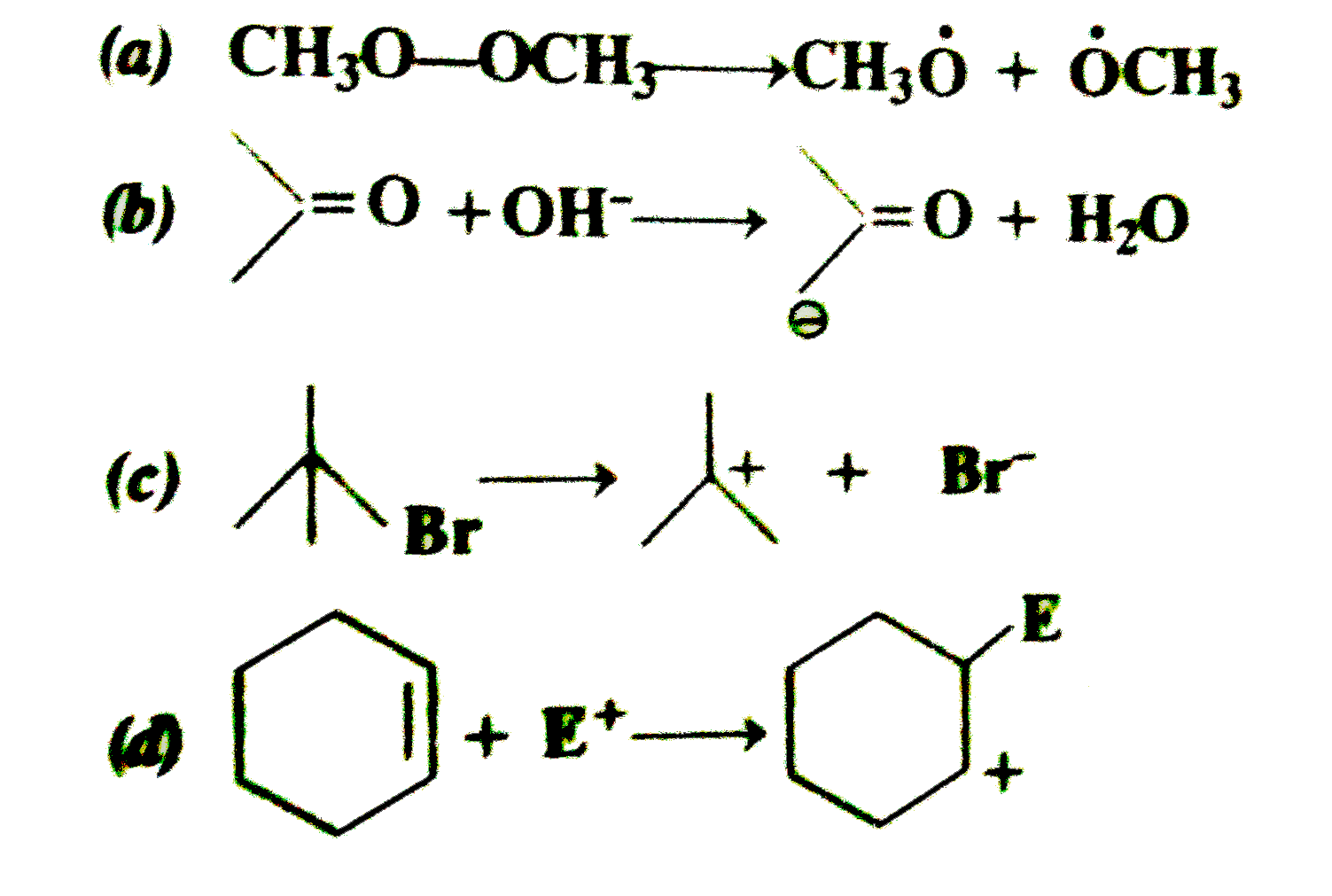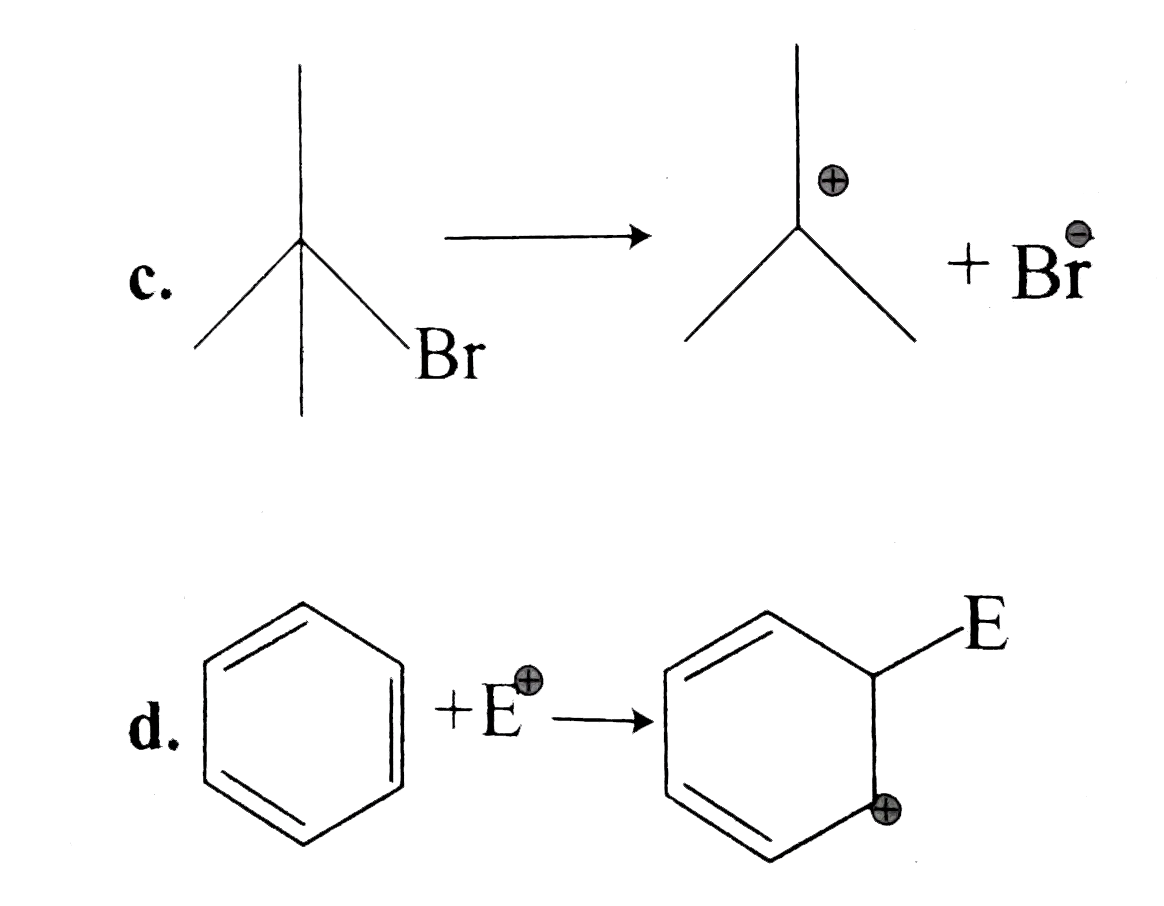Write about bond cleavage and intermediate free radical
In homoltic cleavage, one of the electrons of the shared pair in a covalent bond goes with each of the bonded atoms.
In homolytic cleavage, the movement of a single electron takes place instead of an electron pair. The single electron movement is shown by .half. headed. (fish hook  curved arrow
curved arrow
Such cleavage results in the formation of neutral species (atom or group) which contains an unpaired electron. These species are called free radicals. Like carbocations and carbanions, free radicals are also very reactive. A homolytic cleavage can be shown as:

Organic reactions, which proceed by homolytic fission are called free radical or homopolar or nonpolar reactions
Topper's Solved these Questions
- BOOK - KUMAR PRAKASHANCHAPTER - ORGANIC CHEMISTRY SOME BASIC PRINCIPLES AND TECHNIQUESEXERCISE - Section A (Fundamental Concepts in Organic Reaction Mechanism)40videos
ORGANIC CHEMISTRY SOME BASIC PRINCIPLES AND TECHNIQUES
- BOOK - KUMAR PRAKASHANCHAPTER - ORGANIC CHEMISTRY SOME BASIC PRINCIPLES AND TECHNIQUESEXERCISE - Section -A(Methods of Purification of Organic Compounds)44videos
ORGANIC CHEMISTRY SOME BASIC PRINCIPLES AND TECHNIQUES
- BOOK - KUMAR PRAKASHANCHAPTER - ORGANIC CHEMISTRY SOME BASIC PRINCIPLES AND TECHNIQUESEXERCISE - Section A (Isomerism)12videos
ORGANIC CHEMISTRY SOME BASIC PRINCIPLES AND TECHNIQUES
- BOOK - KUMAR PRAKASHANCHAPTER - HYDROGENEXERCISE - Section-D NCERT Exemplar (Long Answer)8videos
HYDROGEN
- BOOK - KUMAR PRAKASHANCHAPTER - QUESTION ASKED IN JEE -2018EXERCISE - MCQ10videos
QUESTION ASKED IN JEE -2018
Similar Questions
In propagation step, the reaction intermediate of radical polymerisation is
View SolutionFor the following bond cleavages, use curved-arrows to show the electron flow and classify each as homolysis or heterolysis. Identify reactive intermediate produced as free radical, carbocation and carbanion.
 View Solution
View Solution
Knowledge Check
- Question 1 - Select One
In propagation step, the reaction intermediate of radical polymerisation is
ACarbocationBCarbanionCFree radicalDCarbene - Question 2 - Select One
Which of the following is true about the cycloheptatrienyl free radical ?
AIt is an isolatable stable free radicalBIt is an aromatic free radicalCIt has 4n+2π electronsDNone of these
Classify each of the following as homolysis as homolysis or heterolysis. Identify the reaction intermediates produced , as free radical, carbocation and carbanion.
 View Solution
View SolutionClassify each of the following as homolysis or heterolysis. Identify the reaction intermediates produced , as free radical, carbocation and carbanion.
 View Solution
View SolutionComparison OF Stabilities and Intermediates (carbocation||Free Radicals)
View SolutionWhich of the following is true about the cycloheptatrienyl free radical ?
View SolutionFor the following bond cleavages, use curved-arrow to show the electron flow and classify each as homolysis or heterolysis. Identify intermediate products as free radical, carbocation, and carbanion.
(a) CH3O−OCH3→CH3.O+.OCH3
 .View Solution
.View SolutionFor the following bond cleavages, use curved-arrow to show the electron flow and classify each as homolysis or heterolysis. Identify intermediate products as free radical, carbocation, and carbanion.
(a) CH3O−OCH3→CH3.O+.OCH3
 .View Solution
.View Solution

